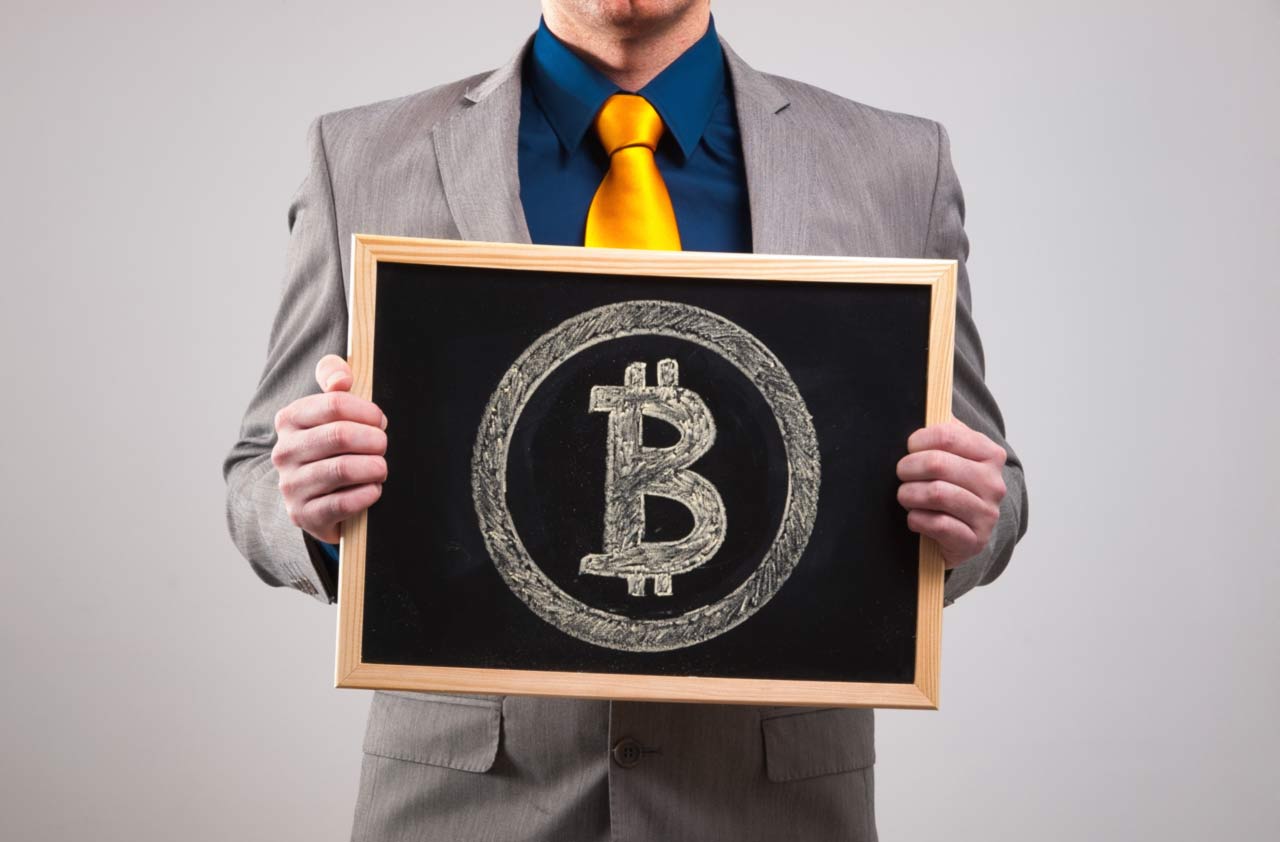The Bitcoin IRA: 5 Essential Facts You Need to Know
When you think IRA investments, you're probably not thinking bitcoin. With a self-directed IRA, investing in the skyrocketing currency could be an option. But should you go for it?


You can’t escape the hype. It seems that everywhere you turn, people are talking about bitcoin. But few people understand what bitcoin is and how it works.
Bitcoin is a peer-to-peer system where transactions typically take place directly between users. It works without a single or central administrator, unlike the U.S. dollar, which is produced and managed entirely by the U.S. Treasury and the Federal Reserve. Bitcoins can be exchanged for services, products and various currencies. As we have seen in recent years, the currency can also be used for investment purposes.
One method of investing in bitcoin that has been increasing in popularity is the use of an individual retirement account (IRA). Is this legal? How is the account established?

Sign up for Kiplinger’s Free E-Newsletters
Profit and prosper with the best of expert advice on investing, taxes, retirement, personal finance and more - straight to your e-mail.
Profit and prosper with the best of expert advice - straight to your e-mail.
Investments made using traditional IRAs are typically handled solely by the financial institution with which the IRA is established. The self-directed IRA (SDIRA), however, allows investors to purchase any asset permitted by law. It is capable of holding both conventional assets (stocks and bonds) and alternatives, such as gold and bitcoin.
That said, there is technically no such thing as a bitcoin IRA. There is only the SDIRA that can be used for investing in the so-called cryptocurrency. If you’re considering this option, here are some essential facts to consider.
1. The Self-Directed IRA landscape is evolving.
SDIRAs are flexible, allowing for diverse investments. As many investors are getting bored with traditional investments, such as stocks and mutual funds, more investment variety is being introduced to the market. This evolution of the SDIRA landscape includes the introduction and growing popularity of the idea of investing in bitcoin.
2. Bitcoin has increased in value.
Bitcoin valuations have skyrocketed. The usage of bitcoin has grown, as well, with over 100,000 vendors currently accepting bitcoins as a form of payment. Since a single bitcoin has gone from being valued at 8 cents in 2010 to well over $6,000 today, it makes sense that it is being used more and more as a form of investment. But beware, as a correction could come at any time.
3. The viability of bitcoin IRA investments is questionable.
While it is known that bitcoin values have increased beyond any early predictions, it is unknown how much longer these increases will continue. In fact, should you be looking to invest your IRA in bitcoin, it would be wise to keep it a very small amount of your entire portfolio. It is still very speculative. Make sure to consult with your financial adviser on your portfolio allocation.
4. The legality of bitcoin is currently being debated worldwide.
Some countries, such as Australia and Canada, explicitly permit bitcoins and bitcoin transactions, while others, including Iceland, have strictly prohibited the cryptocurrency. China has allowed the holding and trading of bitcoins but banned the participation of its financial institutions in these activities. Some countries, such as Australia and Canada, explicitly permit bitcoins and bitcoin transactions, while others, have strictly prohibited the cryptocurrency. China has recently banned bitcoin trading, which forced many bitcoin operators to shut down or move their servers offshore.
Bitcoin has been permitted in the United States. However, debate is ongoing, such as whether or not any restrictions should be placed on the cryptocurrency. The IRS in 2014 published guidance stating that it “does not approve IRA investments,” but the agency doesn’t explicitly prohibit them either, which brings us to our next fact.
5. The IRS does not prohibit IRA investments into Bitcoins.
Regarding legality in the United States, investors can find comfort in the lack of specific legal restrictions. Currently, the Internal Revenue Service only prohibits IRA investments in life insurance and collectibles such as stamps, artwork, metals, coins, etc. This stipulation means that you are technically allowed to use your SDIRA to invest in bitcoin, as it is not specifically named in either of the prohibited investment categories.
The legality, stability and investment potential of bitcoin have all been intensely debated — often without clear answers or solutions. In the end, it is up to you to decide what to invest in using your SDIRA.
If you plan to invest in bitcoin using an SDIRA, make sure you do so through a self-directed custodian that does not restrict your investments solely to cryptocurrencies. This way, you can use your SDIRA to act on any significant investment that comes your way.
But be cautious. Bitcoin is very speculative and only should be invested in with careful consideration.
Get Kiplinger Today newsletter — free
Profit and prosper with the best of Kiplinger's advice on investing, taxes, retirement, personal finance and much more. Delivered daily. Enter your email in the box and click Sign Me Up.

Paul Sundin is a CPA and tax strategist. With a worldwide client base, he specializes in tax planning and tax structuring for individuals, entrepreneurs and the real estate industry. In addition to being a CPA, he is also an author, speaker and consultant. His professional mission is to educate taxpayers on tax strategies and personal finance.
-
 Stock Market Today: Stocks Gain on Tech, Auto Tariff Talk
Stock Market Today: Stocks Gain on Tech, Auto Tariff TalkThe Trump administration said late Friday that it will temporarily halt tariffs on some Chinese tech imports.
By Karee Venema
-
 Sam's Club Plans Aggressive Expansion: Discover Its New Locations
Sam's Club Plans Aggressive Expansion: Discover Its New LocationsSam's Club expansion plans will open up to 15 new stores each year. Learn where they plan to open in 2025.
By Sean Jackson
-
 How Baby Boomers and Gen Xers Are Redefining Retirement Living
How Baby Boomers and Gen Xers Are Redefining Retirement LivingBoth generations need to embrace change and leverage real estate as a dynamic asset in their retirement planning. Here's how financial advisers can help, too.
By David Conti, CPRC
-
 How Good Advisers Manage Risk in Challenging Markets
How Good Advisers Manage Risk in Challenging MarketsThey understand the difference between what might be real challenges to an investor's strategy and fear brought on by market volatility.
By Ryan L. Kirk, CFA®
-
 Financial Planning's Paradox: Balancing Riches and True Wealth
Financial Planning's Paradox: Balancing Riches and True WealthWhile enough money is important for financial security, it does not guarantee fulfillment. How can retirees and financial advisers keep their eye on the ball?
By Richard P. Himmer, PhD
-
 A Confident Retirement Starts With These Four Strategies
A Confident Retirement Starts With These Four StrategiesWork your way around income gaps, tax gaffes and Social Security insecurity with some thoughtful planning and analysis.
By Nick Bare, CFP®
-
 Should You Still Wait Until 70 to Claim Social Security?
Should You Still Wait Until 70 to Claim Social Security?Delaying Social Security until age 70 will increase your benefits. But with shortages ahead, and talk of cuts, is there a case for claiming sooner?
By Evan T. Beach, CFP®, AWMA®
-
 Retirement Planning for Couples: How to Plan to Be So Happy Together
Retirement Planning for Couples: How to Plan to Be So Happy TogetherPlanning for retirement as a couple is a team sport that takes open communication, thoughtful planning and a solid financial strategy.
By Andrew Rosen, CFP®, CEP
-
 Market Turmoil: What History Tells Us About Current Volatility
Market Turmoil: What History Tells Us About Current VolatilityThis up-and-down uncertainty is nerve-racking, but a look back at previous downturns shows that the markets are resilient. Here's how to ride out the turmoil.
By Michael Aloi, CFP®
-
 Could You Retire at 59½? Five Considerations
Could You Retire at 59½? Five ConsiderationsWhile some people think they should wait until they're 65 or older to retire, retiring at 59½ could be one of the best decisions for your quality of life.
By Joe F. Schmitz Jr., CFP®, ChFC®